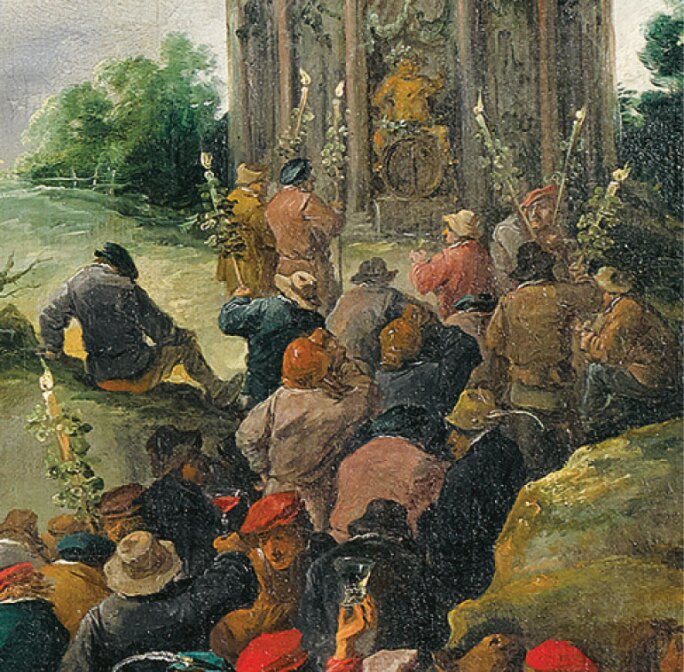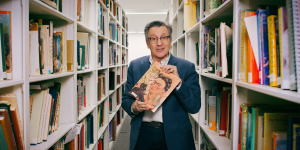A closer look at the style, characters and symbols in this celebratory genre scene.
F
lemish artist, court painter and curator David Teniers the Younger enjoyed a long and illustrious career during the 17th century. A prolific master of composition and expression, Teniers was versatile in many genres – landscape, portrait, religious and mythological among them – but it was his familiar views of peasant life that were his most admired. Born in Antwerp in 1610, Teniers studied first with his father, David Teniers the Elder, before finding inspiration in the works of fellow Flemish painter Adriaen Brouwer and those of the thriving Dutch genre painters to the north. The Wine Harvest, a large-scale culmination of these influences, depicts villagers active in their harvest and celebration. There are a few transporting grapes, others making wine and many drinking it – including, we might empathise, some who have enjoyed a little too much.
Experience the Earthly Pleasures of Teniers‚' 17th-Century Wine Harvest
-
 Auctions and ExhibitionsThe Art Benjamin Doller Can’t Stop Thinking About Is Back on Madison
Auctions and ExhibitionsThe Art Benjamin Doller Can’t Stop Thinking About Is Back on Madison -
 Swinging on a Star: The Private Collection of Kathryn & Bing CrosbySwinging on a Star: Inside Bing & Kathryn Crosby’s Never-Before-Seen Private Art Collection
Swinging on a Star: The Private Collection of Kathryn & Bing CrosbySwinging on a Star: Inside Bing & Kathryn Crosby’s Never-Before-Seen Private Art Collection -
 Expert VoicesSix Judaica Treasures that Reveal a Vanished World
Expert VoicesSix Judaica Treasures that Reveal a Vanished World
Anatomy of an Artwork
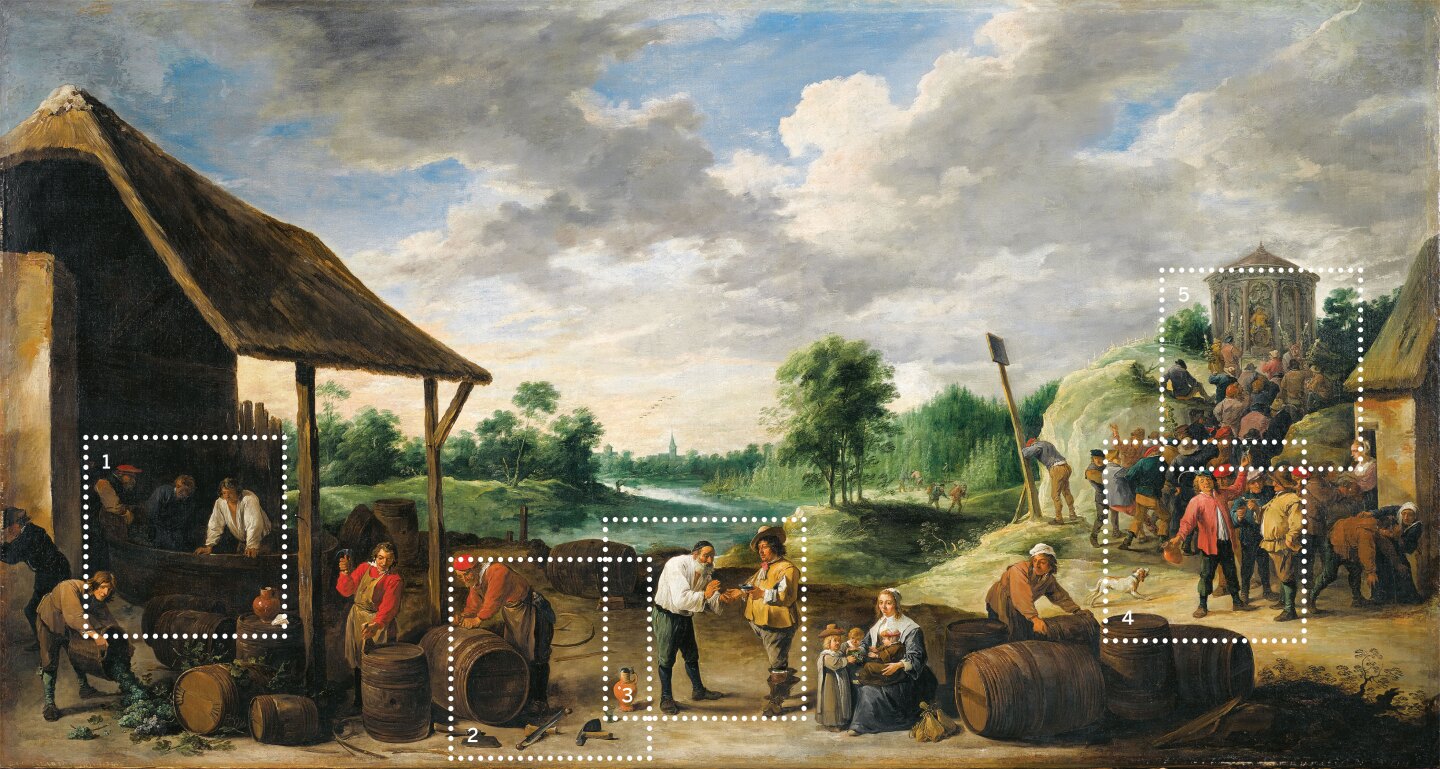
DAVID TENIERS THE YOUNGER
The Wine Harvest
£3,000,000–5,000,000
Old Master Paintings Evening Sale, London, 10 December
Exhibition: 5–9 December
1. WORK
Two burly individuals are treading an earlier delivery in a huge wooden vat while yet more grapes are unloaded before them. Nearby two coopers are busily fixing up barrels for the wine, the tools of their trade scattered around them.
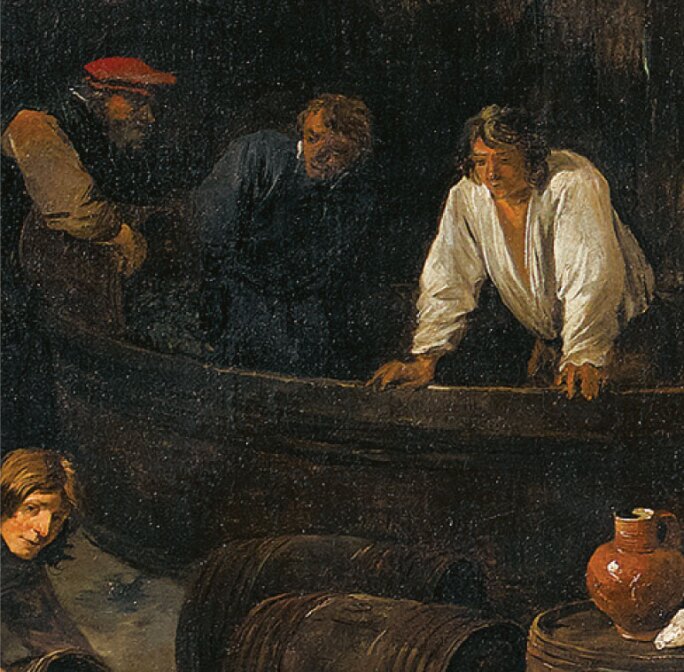
2. STILL LIFE
As he matured, Teniers’s technical mastery extended to the still-life elements in his works. Here he takes great care to render the tools, vessels and the glass that fills the bottom of the picture.
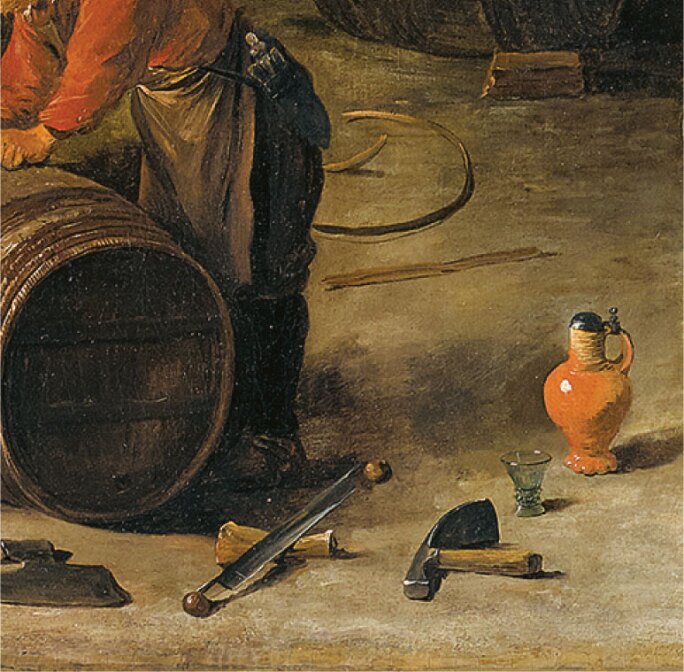
3. EXCHANGE
In the centre the foreman proffers a saucer of the new vintage to a well-dressed wine merchant with whom he is hoping to seal a deal. Beside them, the merchant’s wife guards his bags of money until the deal is done. The merchant very likely commissioned the painting from Teniers as a unique family portrait.
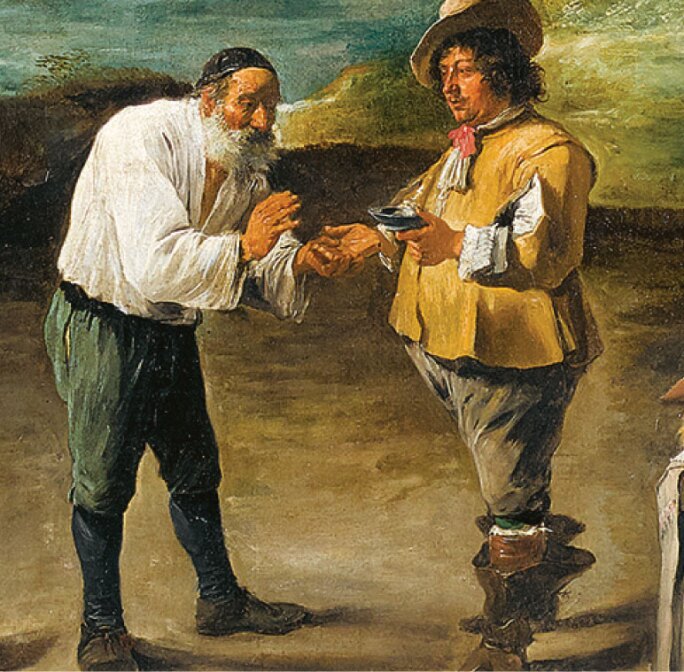
4. SELF-PORTRAIT
Teniers appears in many of his pictures, often formally as himself, and at other times playing a character in a narrative, as seen here.
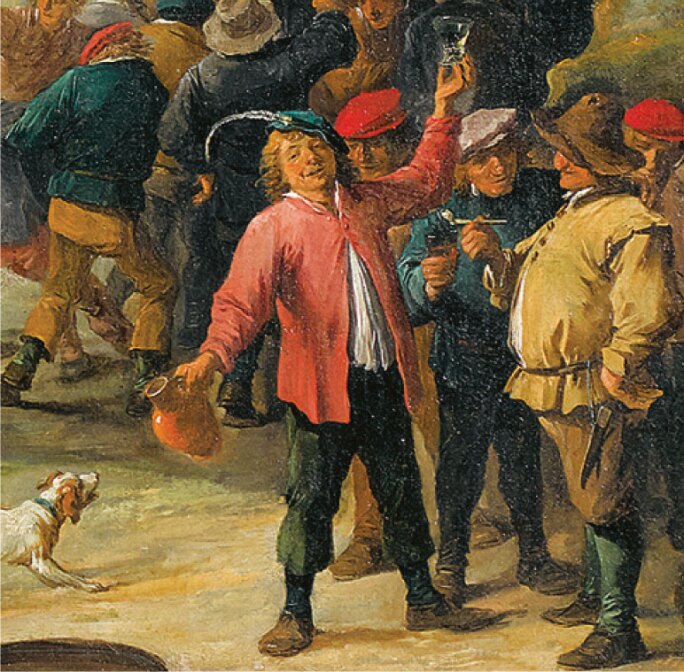
5. BACCHUS
Villagers process up the hill, raising their glasses to celebrate in front of a monument of Bacchus, god of wine and the harvest. They carry torches wrapped in ivy, calling to mind the god’s thyrsus, a staff covered in leaves and vines.
